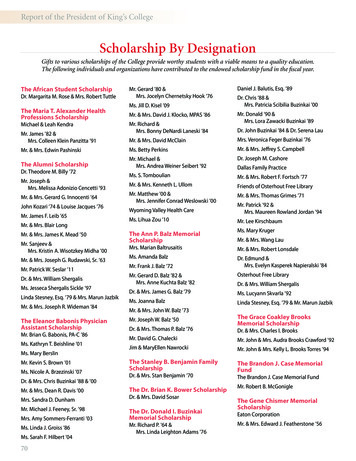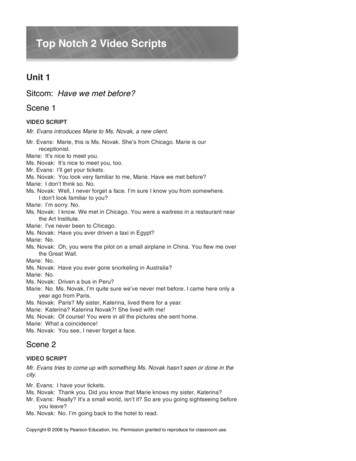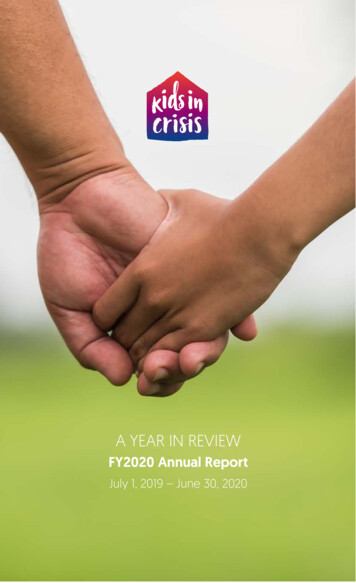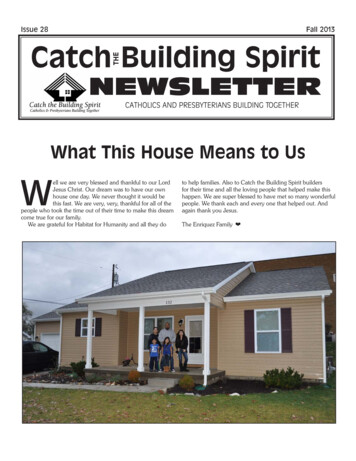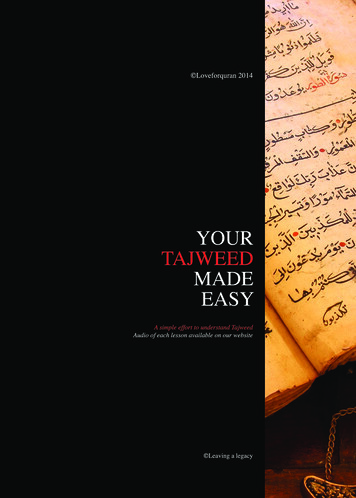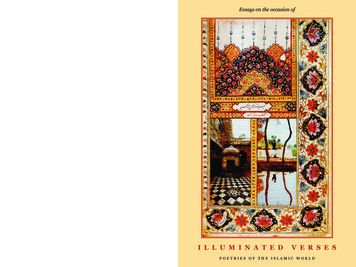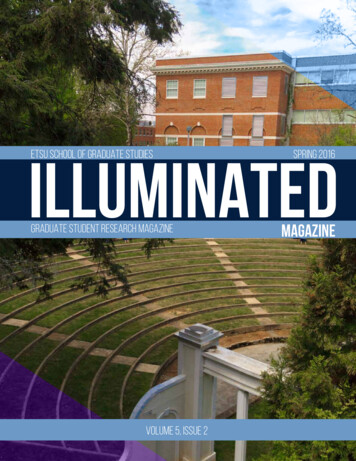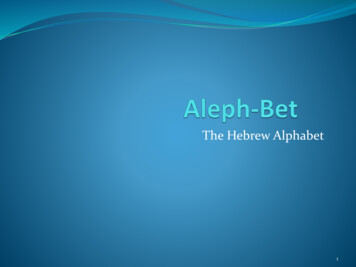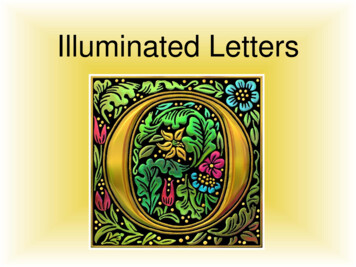
Transcription
Illuminated Letters
History Of Manuscript Illumination During the Middle Ages bookswere hand written. They were called IlluminatedManuscripts because they oftenused gold leaf to brighten up thepage. (Illuminated means “tolighten up”) Some existing Manuscriptillumination books date back tothe 5th century, but the height ofits popularity date back toapproximately 1100. Illuminations took the form ofdecorated letters, borders, andindependent figurative scenes.
The Printing PressThe Printing Press was invented circa 1440, by Johannes Gutenburgof Germany during the early Renaissance. The invention of theprinting press changed the world in many aspects. Texts becameavailable to many, which promoted the ability to learn to read.Reading was no longer reserved for the clergy or the wealthy.
History of Manuscript Illumination Until about the 12th century, themost elaborate and beautifulilluminations were devoted toreligious works, and mostmanuscripts were produced inmonasteries. In a monastery, thescriptorium was the center for bothscholarly activity and the copyingof texts. During the rise of universities incities in the 12th and 13thcenturies, scribes andilluminators were increasinglylaymen who made their living bysupplying fine manuscripts tonoblemen, the new middle class,and students and professors ofemerging universities.
How they are made By the high Middle Ages, the making of amanuscript was often divided among fourdistinct craftsman: the parchmentmaker, the scribe, the illuminator, andthe bookbinder. Typically, each belongedto a guild (sort of like our Unions of today)with specific guidelines and standards. The construction of an illuminatedmanuscript began with the parchmentmaker, who prepared the animal skinsused to make the leaves of a manuscript.Although paper was present in Europe asearly as the 14th century, manuscriptswere most often written on the speciallyprepared skin of calves, sheep, or goats.Though expensive, parchment provided asurface that was beautifully textured,translucent, and durable.
How they are madeOnce the skins were preparedand cut, the scribe wrote themanuscript’s text by hand. Ascribe usually made his ownquills and ink. In themanuscript page at the left, St.Mark is portrayed as a scribedipping his quill into a pot ofink as he sits before a lectern.Mark holds a knife in his lefthand, used not only to sharpenhis quill, but also to “erase” anymistakes on the manuscript byscratching away the top layer ofthe parchment along with themistake.
How they were made After the text was written, theilluminator added gilded details, ifany, and then provided themanuscript’s painted decoration. Theminiatures were painted with avariety of precious colors made froma wide range of sources, fromvegetable extracts to ground mineralsfrom the earth. The number and variety ofilluminations in a single luxurymanuscript often required thecollaboration of severalcraftsmen. Together, the scribes andartists created a manuscript witheighty-three large illuminations filledwith startling illusions and intricatedetails, including architecturalrenderings and illustrations of flowersand fauna.
How they were made A luxury manuscript was notconsidered complete without anequally fine binding to protectthe manuscript, hold the leavestogether, and keep them fromabsorbing moisture andtherefore curling. Thebookbinder affixed metal claspsor ties of leather or fabric tokeep the manuscript tightlyclosed. Bindings were sometimesembellished with paint, enamel,or with designs stamped intoleather with metal tools. Themost precious bindings wereadorned with metalwork andjewels, particularly in the earlyMiddle Ages.
How does this relate to our lessonEach illuminated letterexemplifies the some of theelements of art and theprinciples of design. Lets lookat an example and trast?
Here are a few more toview and discuss
Modern Day “Illuminated” Letters
Your Assignment:Create an Illuminated LetterCriteria: Letter must take up the majority of your paper. Must have an overall theme, such as plants, flowers, animals, gears, zentanglepatterns. There must be embellishments around the outside of the letter. Color must be added throughout.Things to Consider: The elements and principals of art- you should be able to state which ones youhave used. The use of overlap to add dimension- this will add a lot to the work if youinclude it. A color scheme- Choose wisely young Padawan!
Let’s Look at this Exampleand DiscussWhat elements are dominanthere?Line, shape, color, texture, form,value, spaceWhat Principles of design arerepresented?Balance, contrast, movement,rhythm, unity/variety, emphasisand pattern
Options for your Project Choose your color paper:Black or White Choose your Medium:Color Pencils, Gelly Pens, Watercolor pencils, sharpie. Orcombine a few of them. Choose your letter style.
Steps to create yourcomposition1.When I am done giving directions and you are starting this, you may use myreference sheets for inspiration or you may get your phone from the rack.Your phone is to only be used to look up ideas! When done, return it!1.Create your preliminary sketches, also called thumbnail sketches. There aresome small squares on your hand out that are to be used for this. Rememberto meet the criteria of the project.2.Once your designs have been approved by me, you may get your 8 x 8 inpaper and begin to lightly draw out your composition.3.Then you may begin to add color with whatever medium you have chosen.
Here is a Letter fromBeginning to End
Next Steps
Final Steps
Now it is time to start!
During the Middle Ages books were hand written. They were called Illuminated Manuscripts because they often used gold leaf to brighten up the page. (Illuminated means "to lighten up") Some existing Manuscript illumination books date back to the 5th century, but the height of its popularity date back to approximately 1100.

